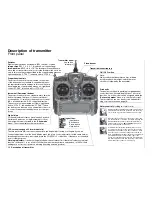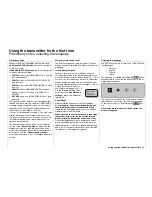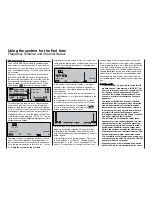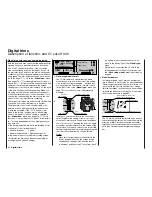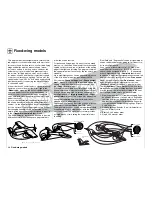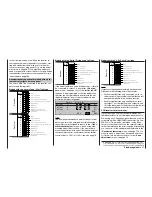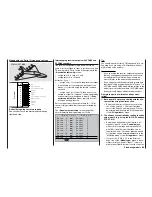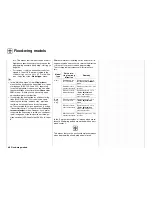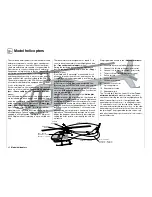
27
Installation notes
Installation notes
Installation notes
Your receiving system must be installed correctly in
the model. The following are a few suggestions when
using
GRAUPNER
equipment:
1. Wrap the receiver in (anti-static) foam rubber at
least 6 mm thick. Fix the foam round the recei-
ver using rubber bands to protect it from vibration,
hard landings and crash damage.
2. The receiver aerial must be secured in the model,
so that there is no chance of it becoming tangled
in the propeller or control surfaces. However, ne-
ver deploy the aerial in an exactly straight line, but
angle it: e. g. run it straight to the tailplane, then
leave the fi nal 10 - 15 cm trailing freely, as this
avoids reception “blind spots” when the model is in
the air. If this is not possible, we recommend that
you lay out part of the aerial wire in an S-shape in-
side the model, as close to the receiver as possib-
le.
3. All switches must be installed in a position where
they will not be affected by exhaust gases or vibra-
tion. The switch toggle must be free to move over
its full range of travel.
4. Always install servos using the vibration-damping
grommets and tubular metal spacers supplied. The
rubber grommets provide some degree of protec-
tion from mechanical shocks and severe vibration.
The drawing on the right shows the correct me-
thod of mounting a servo. The metal spacers are
fi tted into the rubber grommets from underneath.
Don’t over-tighten the servo retaining screws, as
this will compress the grommets and thereby redu-
ce the vibration protection they afford. The system
offers good security and effective vibration protec-
tion for your servos, but only if the servo retaining
screws are fi tted and tightened properly.
5. The servo output arms must be free to move over
their full arc of travel; ensure that no part of the
Servo mounting lug
Retaining screw
Rubber grommet
Brass tubular spacer
mechanical linkage can obstruct the servo in its
movement. It is also mandatory to ensure that the
servo is not stalled mechanically at any point in its
travel. If this is the case, re-connect the mechani-
cal linkage to reduce the linear travel, or reduce
the servo travel at the transmitter. This is carried
out in the option “Travel reduction” in the »
Servo
adjustment
« menu.
The sequence in which the servos are connected to
the receiver is dictated by the model type. Please see
the socket assignments listed on pages 37 and 43.
Be sure to read the safety notes on pages 4 … 6.
Servo mounting
If the receiver is ever switched on when the transmit-
ter is off, the servos may carry out uncontrolled move-
ments. You can avoid this by keeping to the following
order
when switching the system on:
Always switch the transmitter on fi rst,
followed by the receiver.
And when switching the system off:
Always switch the receiver off fi rst,
followed by the transmitter.
When programming the transmitter you must always
ensure that any electric motors in the system cannot
possibly burst into life accidentally, and that an I. C.
engine fi tted with an automatic starter cannot start
unintentionally. In the interests of safety it is always
best to disconnect the fl ight battery, or cut off the fuel
supply, before carrying out any programming work.
Range checking
Before every session you should always check that
each working system is functioning correctly, and car-
ry out a range check with the model on the ground.
The transmitter aerial should be fi tted but collapsed
completely. Carry the aerial a suitable distance from
the model, operating the controls all the time: each
function should work smoothly and correctly during
this test. If your model is powered, repeat the check
with the motor running to ensure that it does not cau-
se interference.
Summary of Contents for mx-24s
Page 1: ...1...
Page 19: ...19 For your notes...
Page 35: ...35 For your notes...
Page 41: ...41 41 For your notes...
Page 57: ...57 For your notes...
Page 63: ...63 63 For your notes...
Page 69: ...69 69 For your notes...
Page 85: ...85 85 For your notes...
Page 99: ...99 For your notes...
Page 143: ...143 For your notes...
Page 191: ...191 For your notes...
Page 212: ...212 212 For your notes...
Page 213: ...213 213 For your notes...
Page 214: ...214 For your notes...
Page 216: ...216...








